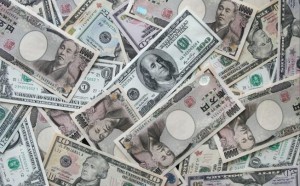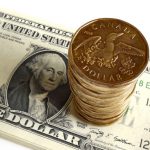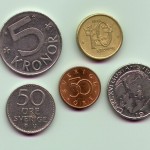 The yen touched fresh 5-year lows against the US dollar after Bank of Japan stated it will keep its monetary base policy target and the pace of asset purchases unchanged.
The yen touched fresh 5-year lows against the US dollar after Bank of Japan stated it will keep its monetary base policy target and the pace of asset purchases unchanged.
Having hit a session high at 104.59 at 06:00 GMT, USD/JPY traded at 104.47 at 08:39 GMT, adding 0.22% for the day. The pair was set for an eight straight week of advances. Support was likely to be received at December 19th low, 103.79, while resistance was to be encountered at October 2nd 2008 high, 104.93.
BoJ, led by Governor Haruhiko Kuroda, decided on its two-day policy meeting concluded today to retain its plan of adding 60 trillion yen to 70 trillion yen a year to the monetary base. In its statement the Japanese central bank said that it will maintain its quantitative easing, until the targeted 2 percent annual inflation stabilizes. The BoJ announced that it will watch closely the risks and make policy adjustments if needed. In a Bloomberg poll, most of the surveyed economists predicted that the central bank will escalate its stimulus in April next year, after the national sales tax is raised.
Japan is in a process of recovery after the 15-year period of deflation. Bank of Japan has been purchasing more than 7 trillion JPY (68.4 billion USD) of government bonds each month in its struggle to achieve 2% inflation in two years since April. There are growing concerns that BoJ will have to increase the scale of its asset-purchasing program in the coming year, which puts heavy pressure on the yen.
Meanwhile, the Federal Reserve announced a plan to reduce the pace of its monthly asset purchases to $75 billion from $85 billion, on its two-day policy meeting, concluded on Wednesday.
Fed Chairman Ben Bernanke announced that the central bank purchases will be divided between $40 billion in Treasuries and $35 billion in mortgage bonds starting from the beginning of 2014.
The Federal Reserve Bank decided also to keep its benchmark interest range unchanged at 0.00% to 0.25%. The central bank reassured that the benchmark rate will likely stay low, saying in its statement that “it likely will be appropriate to maintain the current target range for the federal funds rate well past the time that the unemployment rate declines below 6.5% percent, especially if projected inflation continues to run below the Committee’s 2% longer-run goal”.
“The uncertainty surrounding the U.S. outlook is almost disappearing, which is likely to lead to dollar buying,” said Kengo Suzuki, the chief currency strategist in Tokyo at Mizuho Securities Co., a unit of Japan’s third-biggest financial group by market value, cited by Bloomberg. He also added: “I expect a modest U.S. recovery to continue.”
The greenback was pressured after a report by the US Department of Labor revealed the number of people, who filed for unemployment benefits for the week ended December 14th, increased to 379 000 from 369 000 the previous week. Analysts projected that the jobless claims will lower to 332 000.
In addition, the Federal Reserve Bank of Philadelphia reported that its manufacturing index climbed to a reading of 7.0 in December from a reading of 6.5 in November, but below expectations of an advance to a value of 10.0 during the current month. Overall business activity in the region contracted considerably in comparison with October, when the Fed index stood at 19.8. Manufacturing sector in the United States has been expanding during this year, but not at a steady pace. Activity in the region of New York continued to increase in December, but also below forecasts, a report showed on Monday.
Elsewhere, AUD/USD touched a session high at 0.8888 at 2:05 GMT, after which consolidation followed at 0.8870, up 0.05% for the day. Support was likely to be received at December 19th low, 0.8823, while resistance was to be encountered at December 18th high, 0.8944.





